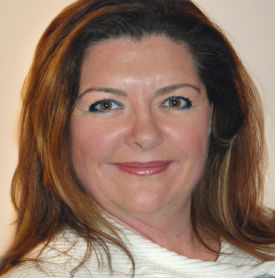Advisors need to brush up on their individual value-added propositions to ensure their clients are not peeled away from them by increased competition. And it’s not just regulatory change that is causing this need either – demographic and technology pressures are in the picture too, advisors heard.
“Even without big regulatory change, the clients you are going to be facing over the next five to 10 years are going to change. You have to determine how you are going to evolve with your clients,” Goshka Folda, senior managing director at Investor Economics, told an Edward Jones seminar in mid-November.
But there is big regulatory change, specifically CRM2, and its push for disclosure of all fees and services among securities and mutual fund advisors by July 2016, Folda underlined.
She said Canadian regulators want to be part of the global trend, stemming mostly from the UK and Australia, to focus on consumers. Both of those countries brought in new regulations in 2013 that separated the advice component from investment fund products, basically by banning embedded commissions and bringing in other reforms. The kinds of mis-selling and financial planning company failures that heralded the changes in the UK and Australia have not happened in Canada, but Canadian regulators want to be part of a global trend towards focusing on the consumer, said Folda.
“The time for resisting these changes has come and gone,” she said. “The time now is to think through how to leverage these changes to actually create an opportunity for advice-giving.”
Fee-for-service
She suggested advisors start moving to introduce a fee-for-service model. Top clients will get a better price and lower-end clients might have to pay more – an issue she said regulators are aware of but don’t seem to be too concerned about.
Dealers, fund companies and especially advisors must start to communicate regulatory changes now to end clients and outline the values of the various aspects of financial planning that they bring to the table.
“Because if you wait until the proverbial kimono gets opened and the fees are communicated in July 2016 then it will be too late, people will not understand it.”
During a question and answer period, Folda said it’s up the industry to show that CRM2 and disclosing costs to investors can work – or potentially face even further regulation.
“It is a bit of a worrisome thought and we are doing all this [with CRM2] and regulators are saying, ‘By the way, ultimately investors will not understand what they are looking at in terms of dollar fees,’” said Folda. “They are waiting to see proof positive that there is an improvement in the client awareness and understanding of what they are getting and paid for and it behooves the industry to act upon it now and try to prevent further intrusion on that front.”
In addition, advisors need to be mindful of the growing number of wealthy baby boomers – ripe pickings for competitors eager to please.
A decade from now, one-third of Canadian households will be in retirement and will control nearly half of the Canadian financial wallet. The Canadian household balance sheet, which measures financial wealth, showed total investible assets of $3.5 trillion as of June 2014, a number that is expected to grow 5.4% over the next 10 years, representing a $2-trillion opportunity.
“Therefore the competition for those assets is expected to be very intense,” said Folda. “Even more important for you is to ensure that your value proposition to the client and their experience with your services and advice is good because there will be others trying to come in and take away share from advisors in general.”
Basically advisors have to prove to retirees that they are not only good at helping clients amass wealth, but they also have to be able to talk to clients about ways they can help them conserve their money in their later years, through tax-efficient income or perhaps, continued growth.
She said while many competitors have been seeking out high net worth clients, lots of others are now setting their sights on the “mass affluent segment,” those with $100,000 to $1 million worth of investible assets. “Build a fence around your clients, because as they increasingly grow their wealth, more and more competitors will become interested in them and put them in their crosshairs. So you better make sure that your value proposition stands up to older and wealthier clients.”
Advisors also should note that seniors are on the top of the list for regulators looking for potential financial abuse and be mindful of any hints that they could be at risk.
Coaching and financial planning
She also pointed out that it’s up to advisors to try to get the second generation on board to continue investing their inheritances with the parent’s advisor.
Debt management is a subject advisors need to deal with even for baby boomers and those in the so-called second cohort – aged 46-55. Coaching and financial planning – not just selling products – is important to bring down their debt load, she said. Once that happens, saving through products and other means will carry the smart advisor.
Competition is also bound to grow from robo-advice – a platform that introduces automated investment plans picked by computer algorithms. Folda said she is reserving judgment on robo-advice to see how it works for older clients with complex needs and how this kind of “advice” works in a down market.
Advisors may be giving personalized, customized advice to their clients, but increasingly, she said, more competition will come from pre-packaged, technology-driven advice.
“Even without regulatory change, I think the emergence of these non-traditional competitors is likely to precipitate some client discussions at your business.”




